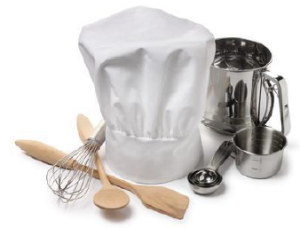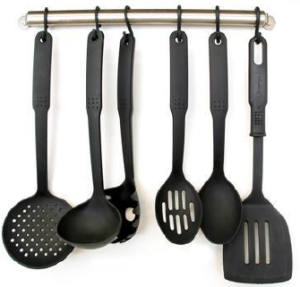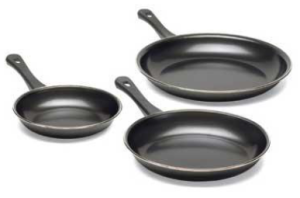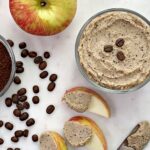 A smart and simple way to prepare your food in a healthier way is to use basic cooking techniques such as baking, braising, grilling, roasting, broiling, poaching, sautéing, stir-frying and steaming. Some of these terms might seem daunting, but they are all fairly simple to use once you learn more about the cooking method.
A smart and simple way to prepare your food in a healthier way is to use basic cooking techniques such as baking, braising, grilling, roasting, broiling, poaching, sautéing, stir-frying and steaming. Some of these terms might seem daunting, but they are all fairly simple to use once you learn more about the cooking method.
Healthy cooking techniques can cut fat and calories. For instance, when frying one tablespoon of oil adds 14 grams of fat and more than 100 calories. By choosing to roast instead of fry, the oil is eliminated which substantially lowers the fat and calorie content of the food.
Dry Heat Cooking Techniques
 Baking surrounds the food with hot, dry air in the over. Food can be cooked covered or uncovered when baking and it generally does not require adding fat to the food.
Baking surrounds the food with hot, dry air in the over. Food can be cooked covered or uncovered when baking and it generally does not require adding fat to the food.
Grilling exposes the food directly to heat using a heat source located beneath the cooking surface. For smaller items, such as chopped vegetables, use foil or a long-handled grill basket to prevent pieces from slipping through the rack.
Roasting uses an oven’s dry heat to cook the food. You can roast foods on a baking sheet or in a roasting pan. For poultry, seafood and meat place a rack inside the roasting pan so that the fat in the food can drip away during cooking. In some cases, you may need to baste the food to keep it from drying out.
Broiling uses heat from an overhead source to cook foods as well as indirect heat from the preheated platter or grate. To broil indoors, place food on a broiler rack below a heat element.
Sautéing transfers heat from a hot sauté pan to food with the aid of a small amount of low-sodium broth, cooking spray or water. The liquid should just cover the bottom of the pan. The food should be placed in the pan in a single layer and turned or tossed occasionally.
Moist Heat Cooking Techniques
Poaching transfers heat from a liquid to a food. To poach foods, gently simmer ingredients in water or a flavorful liquid such as broth, vinegar or juice until they have cooked through and are tender. The desired liquid temperature is between 160-180 degrees Fahrenheit with only slightly movements and little to no bubbles. Boiling water when poaching will cause the ingredients to fall apart or toughen.
 Stir-frying is a variation of sautéing. It uses a small amount of liquid to rapidly cook small, uniform-sized pieces of food in a wok or large nonstick frying pan. The ingredients are constantly tossed or turned.
Stir-frying is a variation of sautéing. It uses a small amount of liquid to rapidly cook small, uniform-sized pieces of food in a wok or large nonstick frying pan. The ingredients are constantly tossed or turned.
Steaming is one of the simplest cooking techniques that lock in moisture and nutrients without the added fat. It Is often used for tender foods that don’t require long cooking times, such as fish and vegetables. If you use a flavorful liquid and add seasoning to the water, the food will be seasoned as it cooks. The food is placed in a basket or rack above a boiling liquid so that the food does not touch the liquid, but allows the steam to circulate around the food.
Combination Cooking
Braising is typically used for larger pieces of meat that are first browned in a small amount of fat at a high temperature in a pan on top of the stove. After browning the ingredients, they are slowly cooked covered with a small amount of liquid, such as water or broth, either in the oven or on the stop top. Since broiled items are cooked for a short period of time under intense direct heat, the loss of nutrients and the amount of fat are reduced. Braised foods are usually served with a sauce made from the cooking liquid.
How can you make your cooking techniques healthier?!



